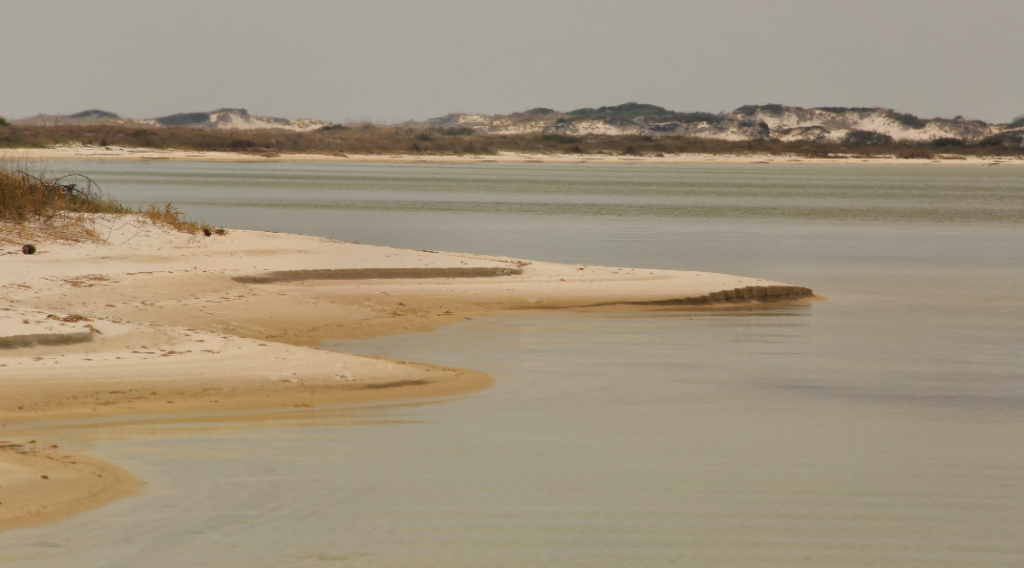Enhancing Coastal Adaptation Planning at Gulf Islands National Seashore

Project Information
Principal Investigator: Erin Seekamp, Department of Parks, Recreation, and Tourism, NC State University
Jim Flocks, USGS St. Petersburg Coastal and Marine Science Center
Proposed Project Completion: June 2021. This project is now completed.
Implements Science Plan Theme: Adaptation
Cooperators: Xiao Xiao (Arizona State University), Max Post van der Burg (USGS Northern Prairie Wildlife Research Center), Mitch Eaton (USGS Southeast Climate Adaptation Science Center)
Overview
Barrier islands are subject to natural and anthropogenic changes, such as hurricanes, sea level rise and dredging. These changes can influence the persistence of natural and cultural resources. For example, a single storm event can drastically alter barrier islands, damaging or destroying cultural resources and impacting (either negatively or positively) habitat. Moreover, dredging can change the natural rates of lateral sand transport and placement of dredge materials can also influence natural rates of lateral sand transport, both of which can have positive (sand accretion) or negative (sand erosion). These changes to barrier islands can also influence the ability of the islands’ dunes to serve as a first line of defense for the mainland during storm events. A better understanding of sediment budgets related to coastal vulnerability (storm events and dredging) can enhance the protection of both natural and cultural resources and guide future nourishment and placement of dredge materials. This work supports the conservation stewardship mission of the National Park Service by providing science to inform management of its natural and cultural resources at Gulf Islands National Seashore. Specifically, this project enhanced ongoing research at Gulf Islands National Seashore related to cultural resource adaptation planning and identified priorities for future research to better conserve the cultural and natural resources on the barrier islands. Intended outcomes from the project include (a) enhancing efficiency in adaptation planning of vulnerable coastal resources and (b) enabling future funding decisions based on research priorities that will help predict changes of barrier islands and reducing the negative impacts associated with improperly placed dredge material.
